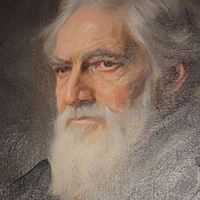Flinders Petrie
Sir William Matthew Flinders Petrie, FRS, FBA, commonly known as Flinders Petrie, was an English Egyptologist and a pioneer of systematic methodology in archaeology and preservation of artefacts.
Sir Flinders Petrie, in full Sir William Matthew Flinders Petrie, British archaeologist and Egyptologist who made valuable contributions to the techniques and methods of field excavation and invented a sequence dating method that made possible the reconstruction of history from the remains of ancient cultures. He was knighted in 1923.
Flinders Petrie, was an English Egyptologist and a pioneer of systematic methodology in archaeology and preservation of artefacts. He held the first chair of Egyptology in the United Kingdom, and excavated many of the most important archaeological sites in Egypt in conjunction with his wife.
Petrie was privately educated, early developing archaeological and ethnological interests, particularly in the area of ancient weights and measures, and in Egyptology. His father taught his son how to survey accurately, laying the foundation for his archaeological career. At the age of eight, he was tutored in French, Latin, and Greek, until he had a collapse and was taught at home.
At the age of 24, Petrie wrote Inductive Metrology; or, The Recovery of Ancient Measures from the Monuments, a work that represented a new approach to archaeological study. Fieldwork done at various locations in Britain, including Stonehenge, enabled him to determine by mathematical computations the unit of measurement for the construction of the monument. His Stonehenge: Plans, Description, and Theories was published in 1880.From 1880 onward, he plunged into an active career of surveys and excavations in Egypt and Palestine and published a prodigious output of 40 large volumes furnished with numerous plates, a series of popular books, and his autobiography.
Petrie began his excavations at the Giza pyramids in Egypt (1880). He next excavated the Temple of Tanis (1884), the city of Naucratis (1885), the town of Daphnae and its environs (1886), the sites of Hawara, Illahun, and Ghurab in the Faiyûm, Egypt (1888-1890), and the temple and pyramids of Maydum (1891). In 1892 he was appointed Edwards professor of Egyptology at University College, London, till 1933. He then excavated the town of Coptos (Qift; 1895), discovering also the painted pavement of Tell el Amarna, the predynastic site of Nakada (1895), and the temples at Thebes (1897). Petrie spent 6 years (1898-1904) excavating the necropolis of Abydos, uncovering the royal cenotaphs of predynastic times. He excavated at Dandarah, Memphis, and again in the Faiyûm. Here he found a magnificent collection of Twelfth-Dynasty jewelry. He excavated in Palestine from 1922 to 1938.
Petrie and his students and followers introduced systematic examination of any object found in a site. Second, he excavated so as to uncover and leave intact the different layers of the site and their relative position within it. Third, he developed what is known today as sequence dating, a system of chronology based on close study of the stylistic and technical development which every object found on a site exhibited. It was thus in his work as an excavator that Petrie made his biggest contribution. He was knighted in 1923 .Petrie’s best-known works are A History of Egypt, 6 vols. (1894-1925); The Royal Tombs of Abydos I and II (1900-1902); Abydos I-III (1902-1904); Researches in Sinai (1906); The Formation of the Alphabet (1912); Tombs of the Courtiers (1925); and Seventy Years in Archaeology (1931).

Flinders Petrie
Date of Birth: 03 Jun 1853
Birth Place: Charlton, London, United Kingdom
Proffession: Egyptologist
Nationality: United Kingdom
Death: 28 July 1942, Jerusalem


